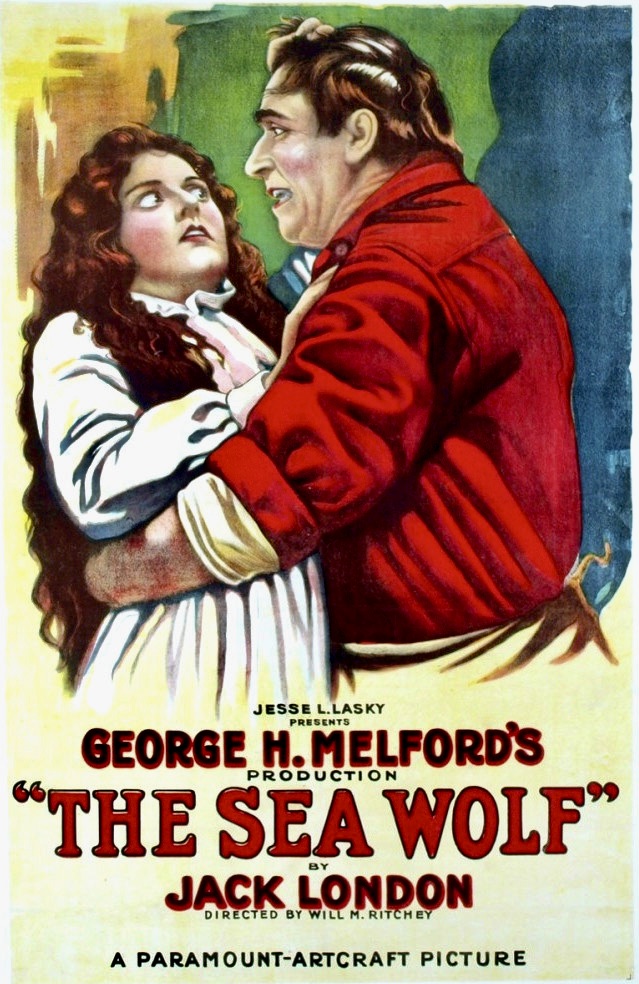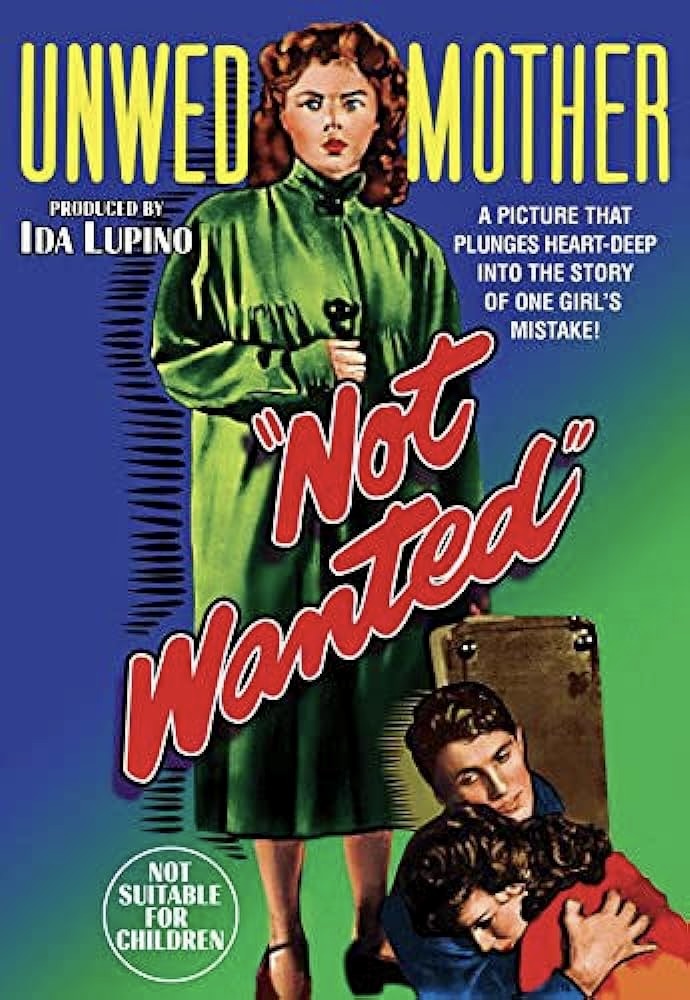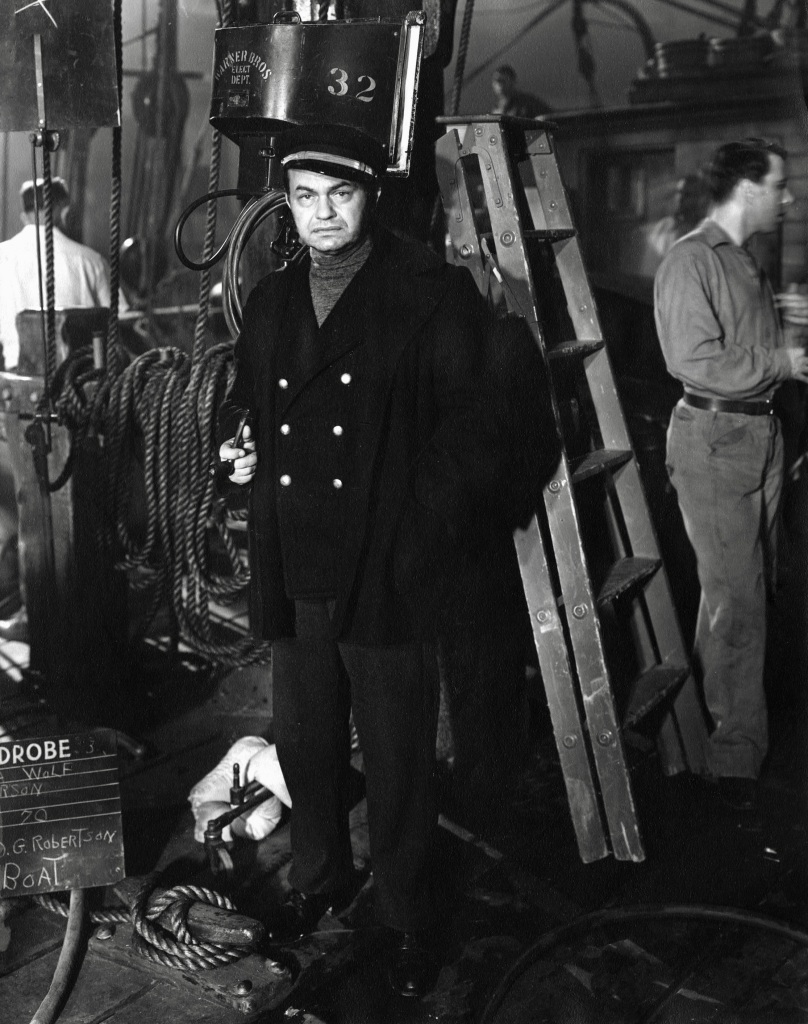
Among the many tales about ill-fated ocean voyages, obsessive and tyrannical sea captains are usually at the root of the trouble. Some of the more memorable ones include Captain Ahab in Moby Dick, Captain Bligh in Mutiny on the Bounty, and Captain Queeg in The Caine Mutiny. But none of these misguided authority figures can match the sadism and brutality of Wolf Larsen, the megalomaniac captain of Jack London’s novel, The Sea Wolf, who was famously portrayed by Edward G. Robinson in a 1941 Warner Bros. production directed by Michael Curtiz.
First published in 1904, London’s story immediately captured the public’s imagination with its tense narrative about Humphrey Van Weyden, a literary critic who is rescued from a shipwreck by crewmembers of the Ghost, a seal-hunting schooner. Once aboard the vessel, Van Weyden encounters the captain, Wolf Larsen, who immediately puts him to work as a cabin boy. Larsen is a fascinating enigma – a mystic and a philosopher but also a dangerous manic-depressive who subjects his crew to outrageous acts of cruelty; at one point, Larsen decides to give the ship’s cook a bath by towing him in the schooner’s wake – an action that results in the cook losing his foot to a shark. As The Sea Wolf builds to a climax, Larsen’s behavior becomes increasingly unpredictable and Van Weyden and another shipwreck survivor, Maud Brewster, plot their escape.
Jack London’s novel has inspired at least nine film versions with the first one, produced in 1913, remaining the most faithful to the book. Other renditions include the 1920 version with Noah Beery in the Wolf Larsen role, a 1926 version starring Ralph Ince, a 1930 remake featuring Milton Sills, a version entitled Barricade (1950) with Raymond Massey, Wolf Larsen (1958), a pet project of actor Sterling Hayden which starred Barry Sullivan, Larsen: Wolf of the Seven Seas (1975), an Italian production with Chuck Connors in the title role, and a made-for-TV version in 1993 starring Charles Bronson. But by general consensus, the 1941 production of The Sea Wolf, directed by Michael Curtiz, is considered the most dramatically effective adaptation due to Edward G. Robinson’s definitive portrayal and Robert Rossen’s screenplay, which accents the psychological and allegorical aspects of the story.

Initially Warner Brothers had purchased the screen rights to London’s novel from film mogul David O. Selznick in 1937 as a potential vehicle for Paul Muni and director Mervyn LeRoy. When that fell through, producer Henry Blanke secured it for Edward G. Robinson who wanted to play Wolf Larsen. Director Michael Curtiz was then assigned to direct and he pursued George Raft for the other male lead – George Leach – but Raft dropped out at the last minute when he realized his part was minor compared to Robinson’s (It was well known in Hollywood that the two actors disliked each other). Curtiz then tried to draft Humphrey Bogart for the part but he was committed to another picture (The Wagons Roll at Night, 1941) so John Garfield, who had made his screen debut in Four Daughters (1938), also directed by Curtiz, was tapped for the role. (Allegedly, it was screenwriter Jerry Wald, working as an assistant to Rossen on the film, who suggested Garfield for the part.)
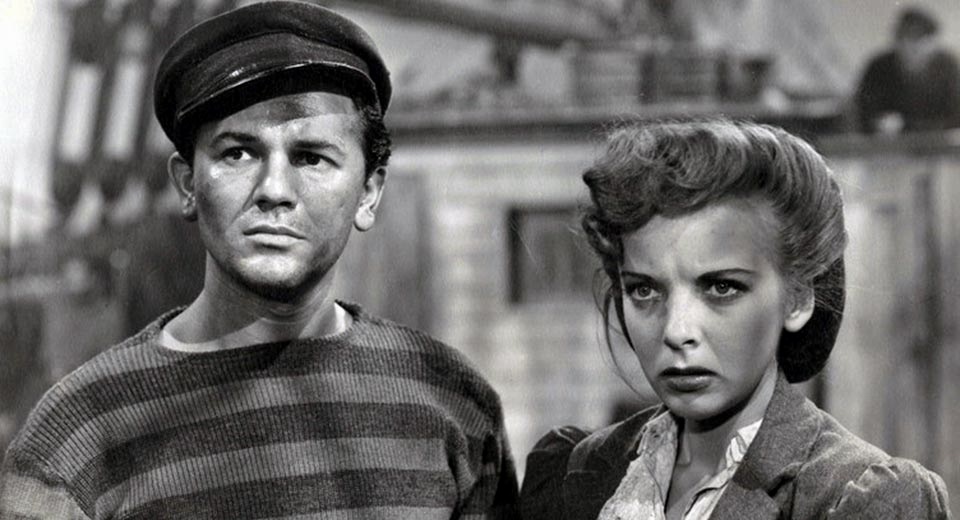
It was a personal triumph for Garfield who counted Jack London among his favorite authors but it was an even bigger honor for Robinson who had been a fan of the novel since he first read it at age eleven. In his autobiography, All My Yesterdays, Robinson recalled: “I discovered The Saturday Evening Post and Jack London’s tale of the sea, The Sea Wolf. I had no idea at the time that the domineering Captain Wolf Larsen was to be characterized by critics as a Nietzsche superman; I just considered him to be a wonderful character. And that’s how I played him, decades later, with John Garfield (who had changed his name from Julie Garfinkle) playing George Leach….John Garfield was one of the best young actors I ever encountered, but his passions about the world were so intense that I feared any day he would have a heart attack. It was not long before he did.”

By all accounts, The Sea Wolf was a positive experience for the cast and crew and Garfield, in particular, came to regard Robinson as a father figure but he also admired Curtiz as a director, even if he wasn’t much help when it came to acting tips. For a sensitive love scene between Garfield and Lupino, Curtiz told the actor in his awkward english, “You love her, see?…You are crazy for her. It happened all of sudden. You don’t understand it. So you love her. There. Now you do it.” Still, even if Curtiz wasn’t gifted at providing insight into characters or acting for his actors, he was an expert at helming well-crafted, big budget entertainments and The Sea Wolf was made between Santa Fe Trail (1940) and Dive Bomber (1941), two big hits for Warner Bros., thanks to the director. Garfield and Curtiz would work together again in 1950 on The Breaking Point, a film noir, which is now considered an overlooked masterpiece in the director’s career and one of Garfield’s finest performances.
It should also be noted that The Sea Wolf signaled the rise of Ida Lupino as an important actress for Warner Bros. She had graduated from B-pictures like Fight for Your Lady (1937) and The Lone Wolf Spy Hunt (1939) to wow critics and audiences with her star-making performances in the three film knockout of The Light That Failed (1939), They Drive By Night (1940) and High Sierra (1940). Other accolades and career high points would follow such as The Hard Way (1943), which won Lupino the Best Actress award from the New York Film Critics Circle, Devotion (1946), a bio-pic about the Bronte sisters, and Road House (1948), a superb film noir with Lupino playing a cynical pianist/singer who drifts into a deadly menage a trois with Cornel Wilde and Richard Widmark as….(big surprise) a psycho! Eventually Lupino became less interested in her acting career and more focused on writing and directing, which began in earnest in 1949, with her directorial debut, Not Wanted.
While the 1941 version of The Sea Wolf remained faithful in spirit to the London novel, screenwriter Rossen, who was a fervent anti-Fascist, drew upon current events to establish an obvious parallel between Larsen’s dictatorial nature and that of a contemporary fanatic like Hitler. He also made several important changes in the storyline; he split the narrative, giving equal time to the battle of wills between Larsen and Van Weyden (Alexander Knox) and the growing romance between Leach and Ruth Webster (Ida Lupino). In addition, he altered the climax which provided a new demise for Larsen and an unexpected fate for Van Weyden. Leach, who was drowned in the original novel, becomes the central love interest in this version, escaping to safety with Ruth Webster. All of these changes actually strengthened the film on a dramatic level and were further enhanced by Sol Polito’s atmospheric cinematography and Anton Grot’s art direction – both heavily influenced by the look of German Expressionist cinema.
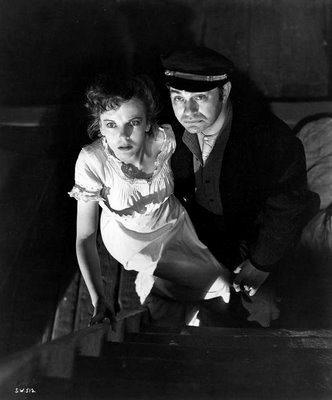
Not surprisingly, the entire film was shot on a sound stage which accounts for its claustrophobic, fog-bound atmosphere, the result of the studio’s new industrial strength fog machines. Strangely enough, it wasn’t the first time John Garfield and Ida Lupino had been engulfed in thick vapors. They previously appeared together the same year in Out of the Fog, a melodrama set on the Brooklyn waterfront.

The Sea Wolf opened to strong reviews with Bosley Crowther of The New York Times writing, “When The Sea Wolf is topside, it rolls along ruthlessly and draws a forbidding picture of oppressive life at sea, of a captain who rules his men without mercy and without hearts.” Unfortunately, in an Oscar year dominated by nominations for Sergeant York, How Green Was My Valley, and Citizen Kane, The Sea Wolf found itself shut out of almost every category. It did, however, score an Academy Award nomination for Best Special Effects by Byron Haskin and Nathan Levinson.
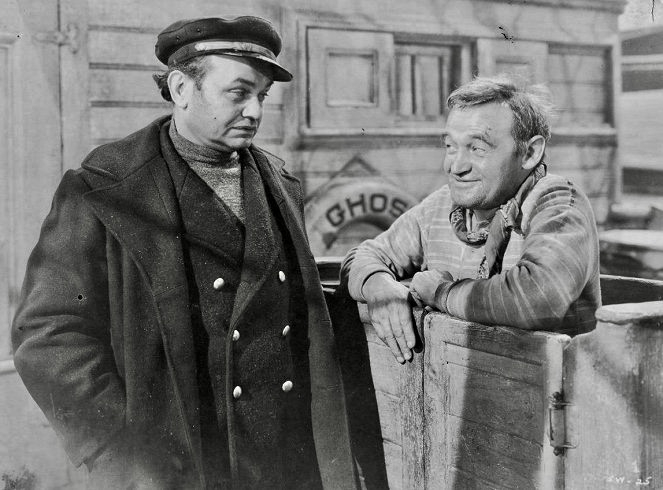
One of the top ten money-makers for Warner Bros. in 1941, The Sea Wolf was so successful that the studio decided to re-release it in a shorter version so movie theater owners could squeeze in additional daily showings of it. As a result, the 100-minute feature was shorn of 13 minutes and this is the version that has survived for so many years until recent times when a 35mm fine grain print of the original version was found at MoMA. According to an article on Leonard Maltin’s website, “Whoever supervised the editing [of the re-release version] did an excellent job as it is unnoticeable in the shortened edition we’ve been enjoying for so many decades. But Curtiz biographer Alan K. Rode says, “The complete version with the additional 13 minutes added heft to several of the scenes between Wolf Larsen (Edward G.) and van Weyden (Alexander Knox). The pursuit of Larsen and his vessel The Ghost by his brother in another ship also was addressed. In the cut version, this important plot aspect was barely mentioned.” Thanks to Warner Archives, fans of The Sea Wolf can now purchase the 100-minute restored version on Blu-ray, which was released in October 2017.
*This is a revised and expanded version of an article that originally appeared on the Turner Classic Movies website.
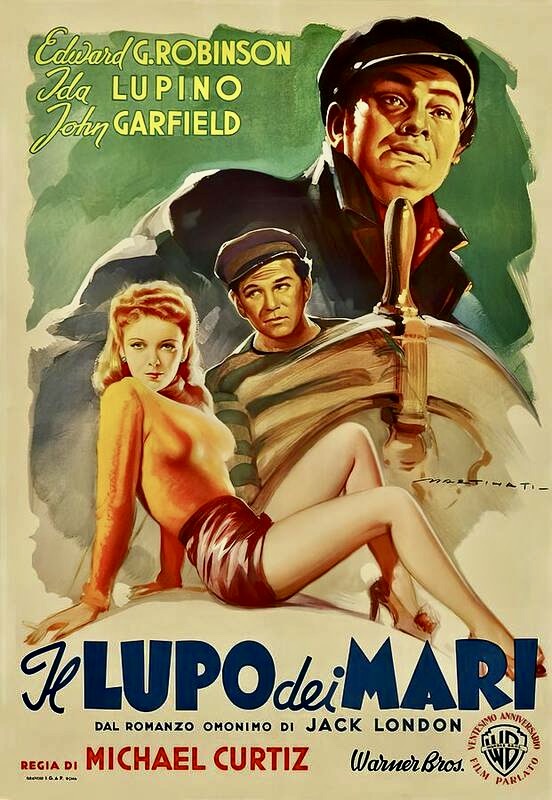
Other Links of interest:
https://www.stutteringhelp.org/content/john-garfield
https://bhpictures.com/news/2021/8/13/ida-lupino-the-lone-woman-in-hollywoods-golden-era
https://www.romanianculture.org/personalities/Edward_G_Robinson.htm
https://www.cineaste.com/winter2017/the-sea-wolf
https://filmstarpostcards.blogspot.com/2023/04/directed-by-michael-curtiz.html
https://www.criterion.com/current/posts/4805-the-breaking-point-all-at-sea


